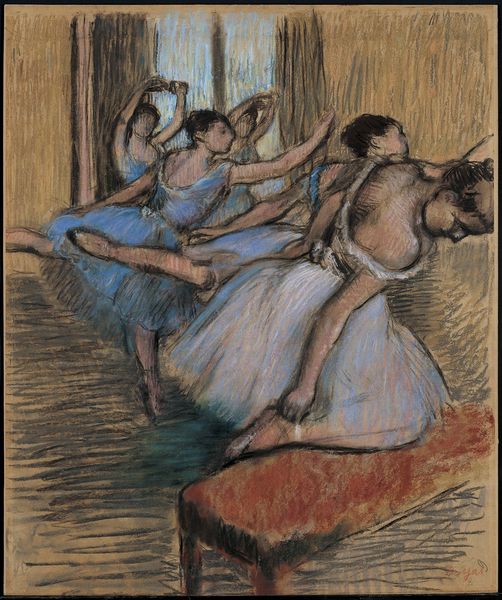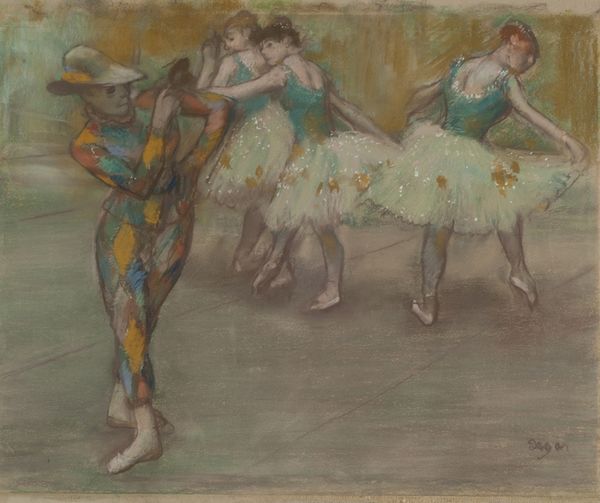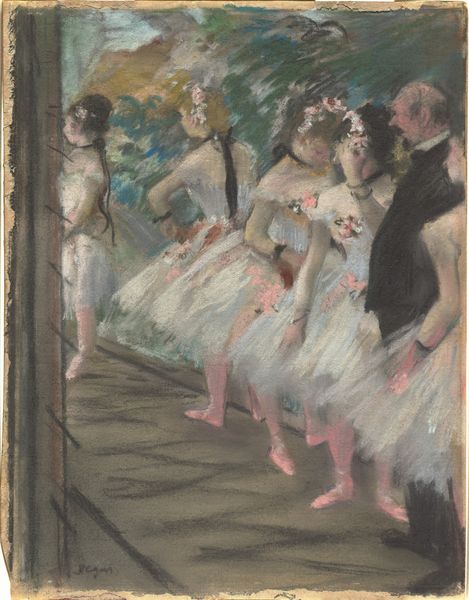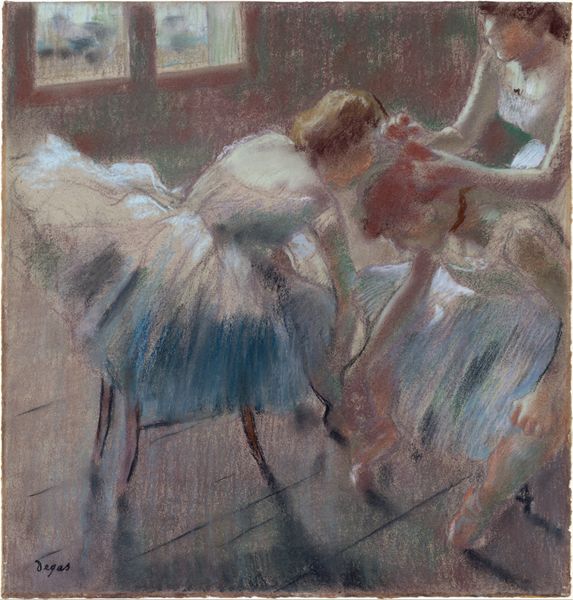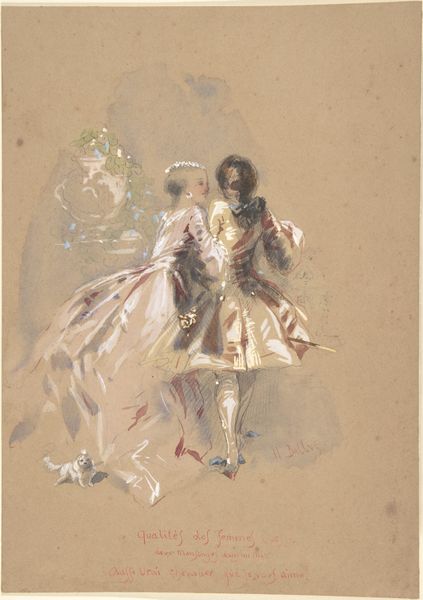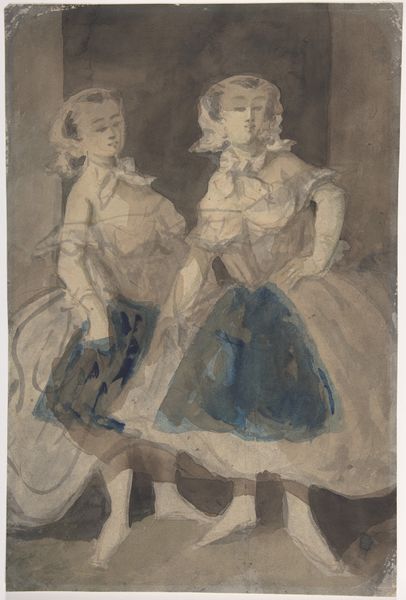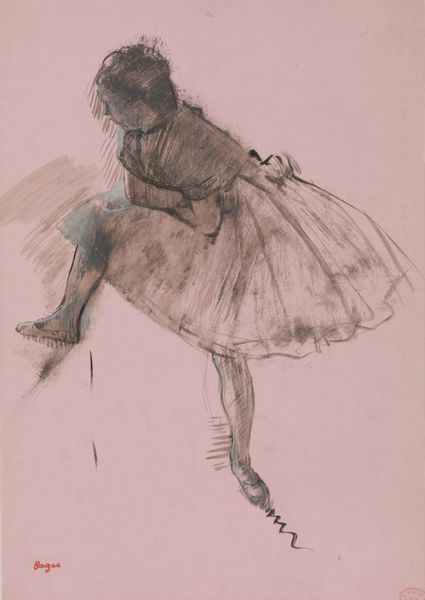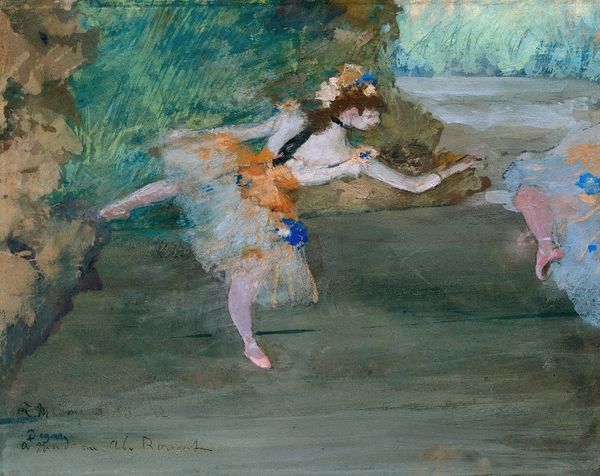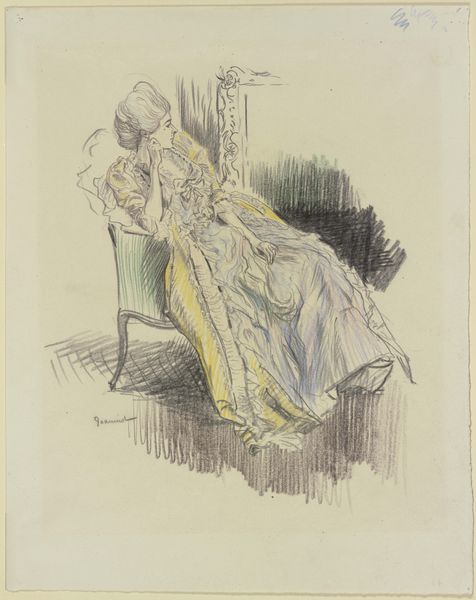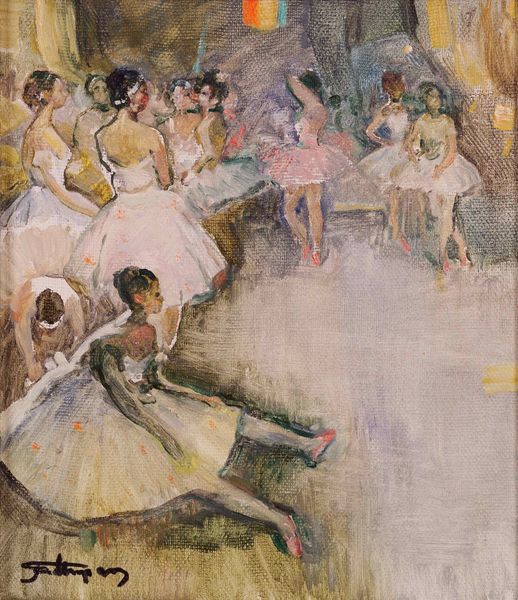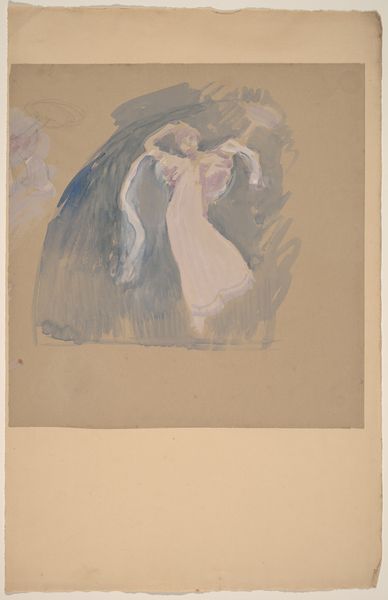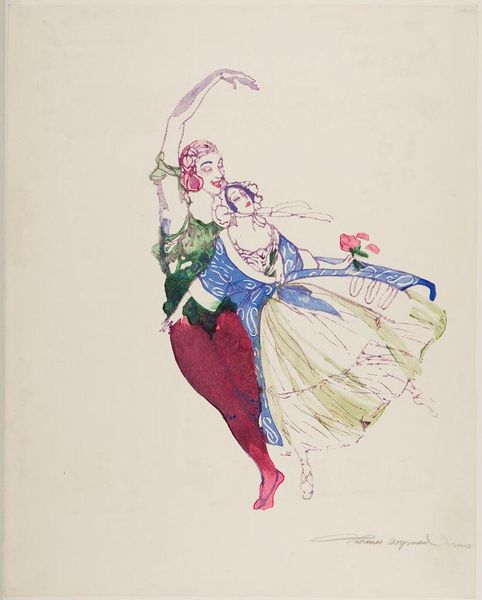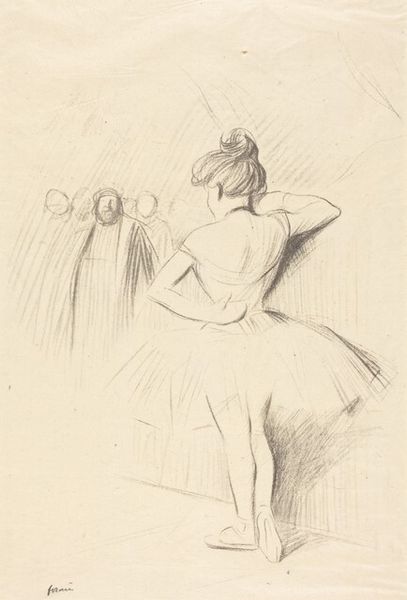
drawing
#
drawing
#
amateur sketch
#
toned paper
#
light pencil work
#
pencil sketch
#
incomplete sketchy
#
personal sketchbook
#
underpainting
#
detailed observational sketch
#
watercolour illustration
#
watercolor
Copyright: Public Domain: Artvee
Henri de Toulouse-Lautrec sketched “Au cirque; Entrèe en piste” using crayon and charcoal to portray the circus in Belle Époque France. The circus wasn't just entertainment. It was a microcosm of society, reflecting class divisions, gender roles, and the spectacle of modern life. We see performers, animals, and spectators, each playing their part in this carefully staged event. The circus, like the art world, was an institution with its own rules and hierarchies. Lautrec, with his interest in the marginalized and the unconventional, was drawn to the circus as a subject. He was fascinated by the performers, often outsiders, who found a place to express themselves within this structured environment. To truly understand this work, we must consider the cultural context in which it was created. Archival research, including newspapers, advertisements, and social commentary from the period, can provide valuable insights into the world of the circus and its place in French society. By examining these sources, we can gain a deeper appreciation for the social commentary embedded in Lautrec's art.
Comments
No comments
Be the first to comment and join the conversation on the ultimate creative platform.
